Taranaki Mounga Project Annual Report 2023-24
Welcome to our 2023-2024 Annual Impact Report. It’s been another busy year restoring Taranaki Maunga. We are increasingly seeing the impact of what we do daily, 9 years into the project. The thriving understory of the ngahere, seeing and hearing more kiwi, and the heartfelt kōrero and joy from those involved at kiwi events are some of the small reminders of he kawa ora, of revitalisation.
There’s been big changes throughout this financial year. Ngā Iwi o Taranaki and the Crown signed the long-awaited Te Ruruku Pūtakerong0, Te Pire Whakatupua mō Te Kāhui Tupua Collective Redress Bill at Ōwae Marae in September 2023. From 2025 a new entity and operational arrangements for Taranaki Maunga begins. The restoration work on Taranaki Maunga and its surrounds will, of course, continue, however Taranaki Mounga Project will look different. We’re excited about the next stage of our journey.
In March 2024 one of our founding partners Next, closed its strategic philanthropic fund, having invested $100 million in education and the environment over 10 years. We are hugely grateful for their support and belief in our project.
This year’s Annual Report is a slim reader-friendly version. It highlights strategy progress in 20223-2024 in revitalising the maunga and its biodiversity. On the people side, it looks at what was achieved in strategy focus areas: Enrich – so people of Taranaki have the ability to self-sustain Te Kāhui Tupua now and in the future, Share – innovative practices that inspire future NZ large-scale restoration projects, and Aspire – iwi and communities are leading and owning the restoration.
1. Aspire

Iwi and communities are leading and owning the successful restoration of Te Kāhui Tupua
2. Share
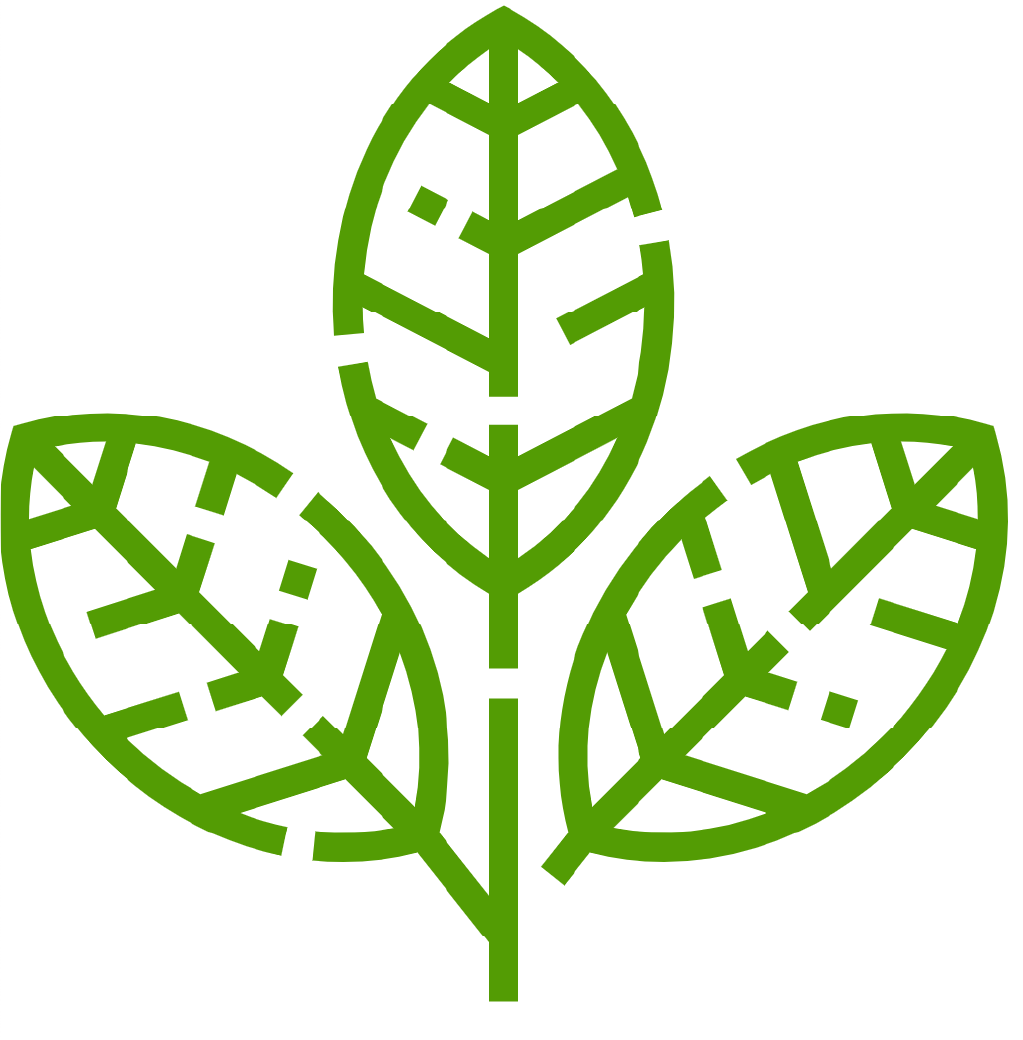
The innovative practices adopted for Te Kāhui Tupua inspires future NZ large-scale restoration projects
3. Enrich

The people of Taranaki have the ability to self-sustain Te Kāhui Tupua now and in the future
4. Revitalise
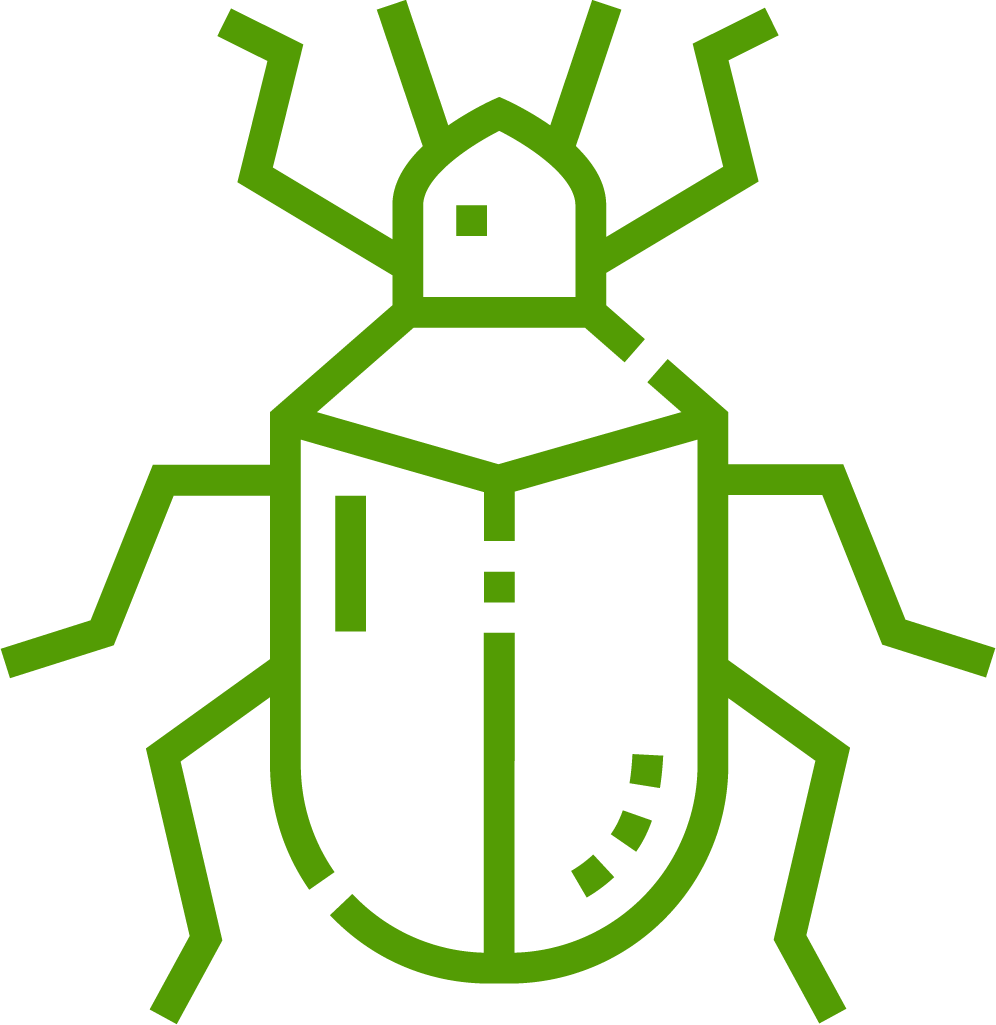
Improving the ecological resilience of Te Kāhui Tupua so that native species flourish
5. Treasure

People adore Te Kāhui Tupua not only for his health and wellbeing benefits, but for a sense of regional identity and belonging
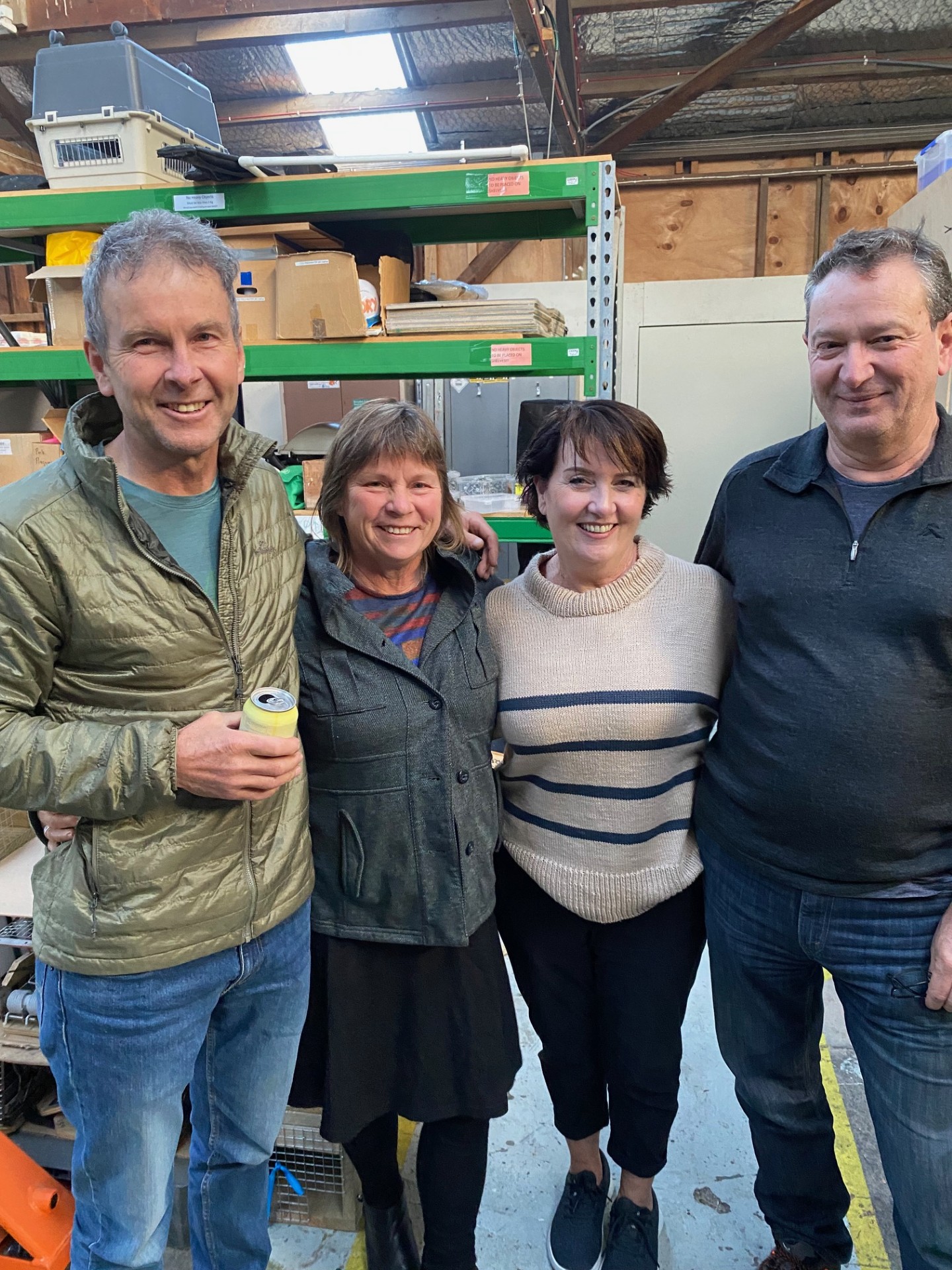
Trapping volunteers Keith, Annette,Mary-Ellen and Andy
Aspire – Iwi and communities are leading and owning
- 6 partnerships with: Te Kahui o Taranaki, Te Korowai o Ngāruahine, Ngāti Tāwhirikura, Nga Mahanga a Tāiri, Ngāti Rereahu, Ngāti Korokī Kahukura
- Working collaborations with multiple community groups and organisations: Taranaki Kiwi Trust, Save the Kiwi, Rotokare Scenic Reserve Trust, Maungatautari Sanctuary Mountain, Te Ara Taiao, Kaitake Ranges Conservation Trust, and Taranaki schools
- Wānanga hosted or attended by TMP: Kurataiao Taranaki, Scion Aerial Invaders project in February, wānanga with Ngāti Korokī Kahukura and Maungatautari Sanctuary Mountain to build relationship and enhance kiwi, explained in the video Taranaki Mounga Project and Maungatautari wānanga (youtube.com)
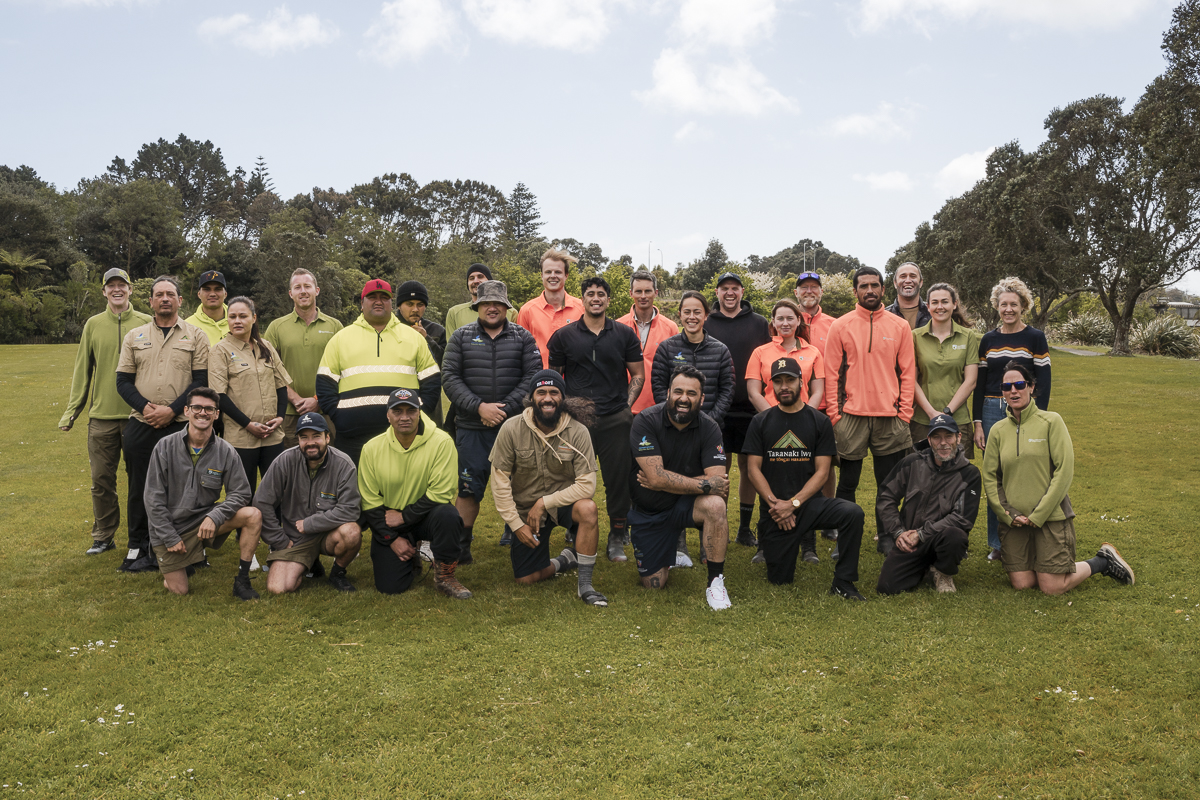
Taranaki Mounga Project team photo
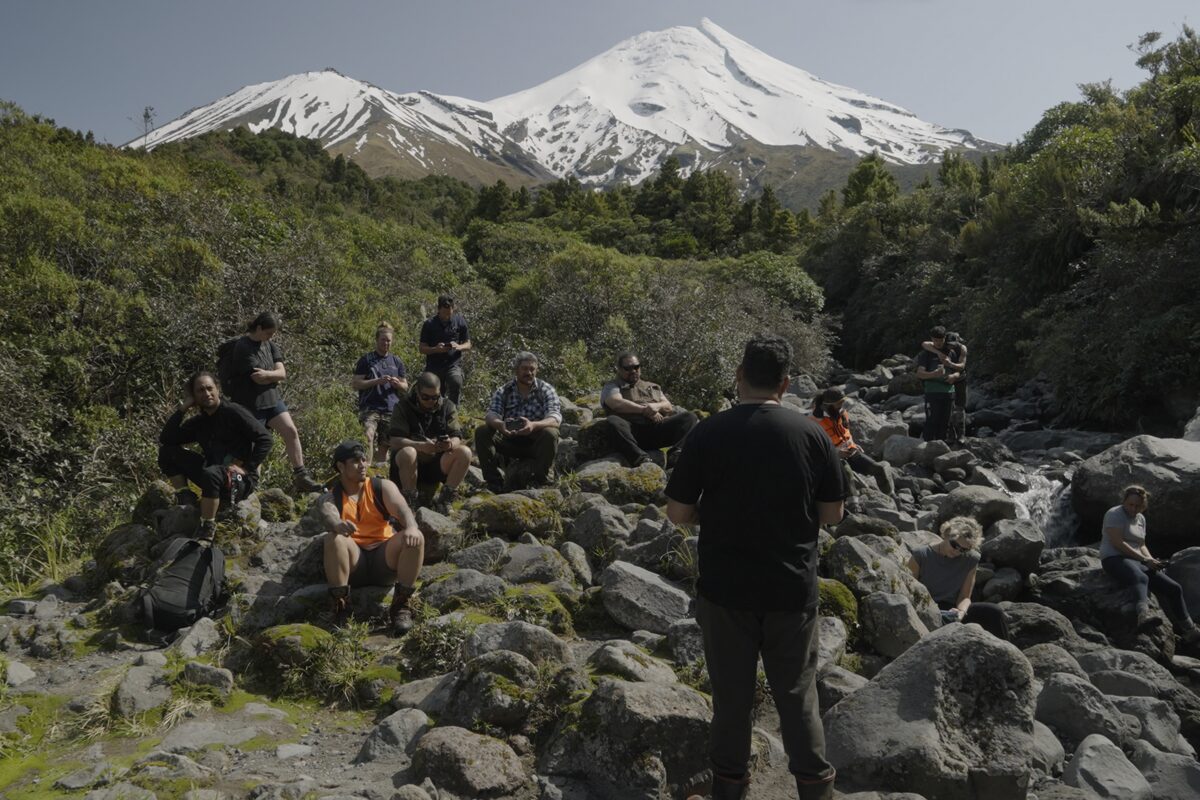
Wānanga with Ngāti Korokī Kahukura
Share – Innovative practices, wananga, story-telling
- Five kiwi release events on Taranaki Maunga and Kaitake with between 30 and 100 participants at each event.
- We received a range of media coverage throughout the year predominantly with Taranaki Daily News, but also Radio NZ, Te Korimako, the Stratford Press and North & South Magazine. Coverage included a feature about the project, call for volunteers, the whio-tracking dog, apprentices graduating, more kiwi on Kaitake, kiwi releases and kiwi deaths, and a day in the life of a ranger.
- 6,000 followers on Taranaki Mounga Facebook page, growing steadily and up 2,000 from the previous year. The reach on some posts achieved up to 18,000 for popular stories.
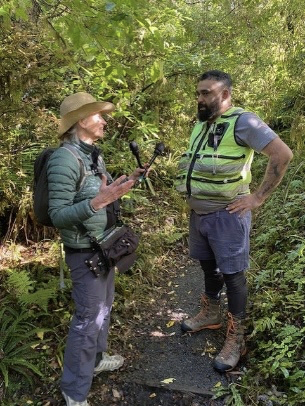
Tāne being interviewed by Sally from Radio NZ
Gallery
Enrich – People, learning and growth
- Volunteers contributed over 2,000 hours of their time, the equivalent of over 250 working days.
- More than 60 people attended a volunteer event in Stratford in July 2023 and signed up to help trapping on the southern side of Taranaki Mounga.
- Four ranger apprentices graduated from their two-year Jobs for Nature and PredatorFree NZ funded programme – Mereana Hanrahan, Mawene Bidois, Jarvis Edwards and Whitikau Rio. In total 5 apprentices have graduated from the programme, which includes the Level 4 Certificate in Conservation Management.
- Te Reo Taiao programme for Taranaki Mounga Project and DOC staff was run supported by NZ Biological Heritage National Science Challenge. Kaimahi involved met regularly at wānanga to improve their Māori language, grow their understanding of tikanga and learn about the places they are working in. Two videos The Journey: Te Reo Taiao (youtube.com) The mahi: Te Reo Taiao (youtube.com) and a book, Te W’are o Ngā Manu Kōrero, were produced, which explain the journey.
- Partnered with Te Kotahitanga o Te Atiawa and Te Maunga Puia on summer intern programme with six paid interns, including several working on Taranaki Maunga, trapping, monitoring species. Intern Lucas Larriman looked for Powelliphanta, the giant snail, in a project using cameras and AI technology with AI Wildlife. Other interns were Shianne Klenner, Naomi Butler and Teremoana Rawiri-Porter.
- Research institution partnerships with Scion, Protecting Aotearoa from Wind Dispersed Pests, and the University of Waikato (Bruce Clarkson)
Gallery
Revitalise – Improving ecological resilience
Trapping and predator control
- Over 6,000 active trap mechanisms are within Te Papa Kura o Taranaki across approximately 35,000 hectares.
- Over 75,000 trap checks were carried out in the year by staff and volunteers, with a 10% catch rate (including rats).
- Mustelid trap network expansion and in-fill work continues around the southern and western sides of Taranaki Maunga, as well as in the Kaitake ‘halo’.
- 36 cats and over 700 mustelids were caught in the year, including 19 ferrets – 17 on Taranaki Maunga, 2 on Kaitake.
- 1080 aerial operations, led by DOC, were unable to be carried out in 2023 due to unfavourable weather conditions. Renewed planning took place in the first quarter of 2024 and operations were carried out in the 2024-25 year period.
- The next layer of protection for Kaitake initiated to suppress rats has been set up on 200 hectares on the Kaitake flats, involving intensive baiting stations.
- 145 dogs were trained in kiwi aversion, across 8 training sessions, including boundary-specific training for Kaitake landowners near the national park.
- 65 Possums eliminated on Kaitake, mostly sub-adult males, the majority caught within 200 metres of the national park boundary, indicating these possums are coming in to the area from farmland and forestry land.
- 60 Titipounamu translocated from Taranaki Maunga to Tarapuhi Bushy Park sanctuary a predator-free sanctuary near Whanganui in April 2023. Puketapu, Pukerangiora and Ngāti Tāwhirikura hapū led the tonu for the manu to go to Ngaa Rauru Kiitahi.
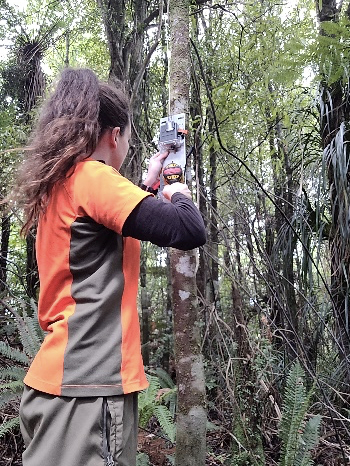
Kat setting up new trapping technology
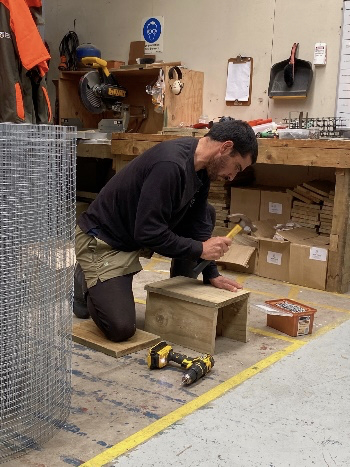
Brandon trap-making
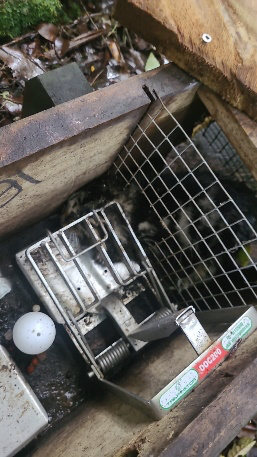
Capturing predators
Biodiversity snapshot:
- Over the past year 79 kiwi were relocated from Maungautautari Mountain Sanctuary and Rotokare Scenic Reserve Trust, a significant yearly increase in the number of kiwi released on Taranaki Maunga, involving a massive team effort across multiple organisations. It brings the total number of kiwi released in Te Papa Kura o Taranaki to 249 (the first kiwi translocations started in 2005).
- The Taranaki Kiwi Trust (TKT) is monitoring 32 kiwi, 15 on Taranaki Maunga and 17 on Kaitake. They have observed at least 18 successful nest attempts, including chicks entering and exiting nests (using camera placements by nests).
- Unfortunately, there were 4 predations on kiwi in August 2023. One death was most like from stoat predation and the other three being most likely from mustelid predation (probably Ferret). Another two kiwi on Taranaki Maunga died due to misadventure (falling from cliffs).
- Despite a truncated monitoring season a steady number of whio/blue duck pairs, 31, were observed across 8 awa, along with 52 ducklings and 31 fledglings. However, smaller family groups and some deaths indicate stoat predation remains an issue, which we hope the aerial poisoning campaign will address.
- Monitoring revealed a live Powelliphanta, the giant snail likely to be unique to Taranaki, as well as 5 shells.
- More than 1000 rare te pua o te reinga or Dactylanthus taylorii plants are protected within Te Papa Kura o Taranaki, covered with cages to prevent possums eating them and monitored annually. Similar to last season, many seed heads appeared adversely affected by damp, with ‘mushy’ seed observed.
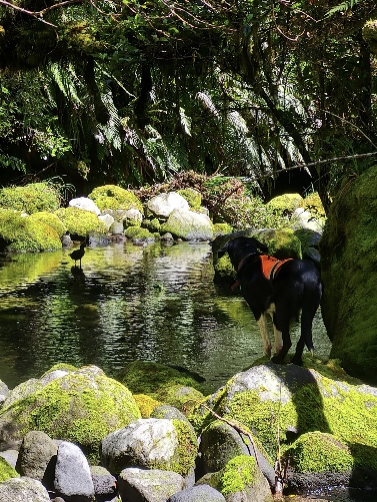
Pip the whio dog finds a whio
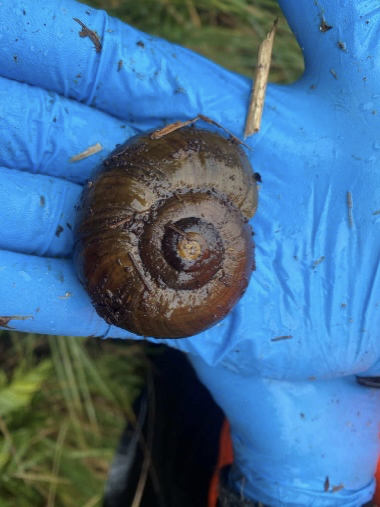
A Powelliphanta “Egmont” snail
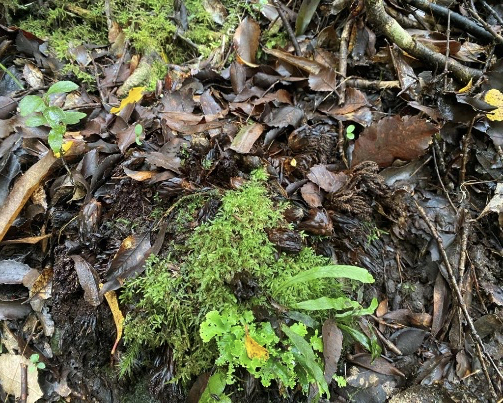
A productive te pua o te reinga plant with active male infloresence.
